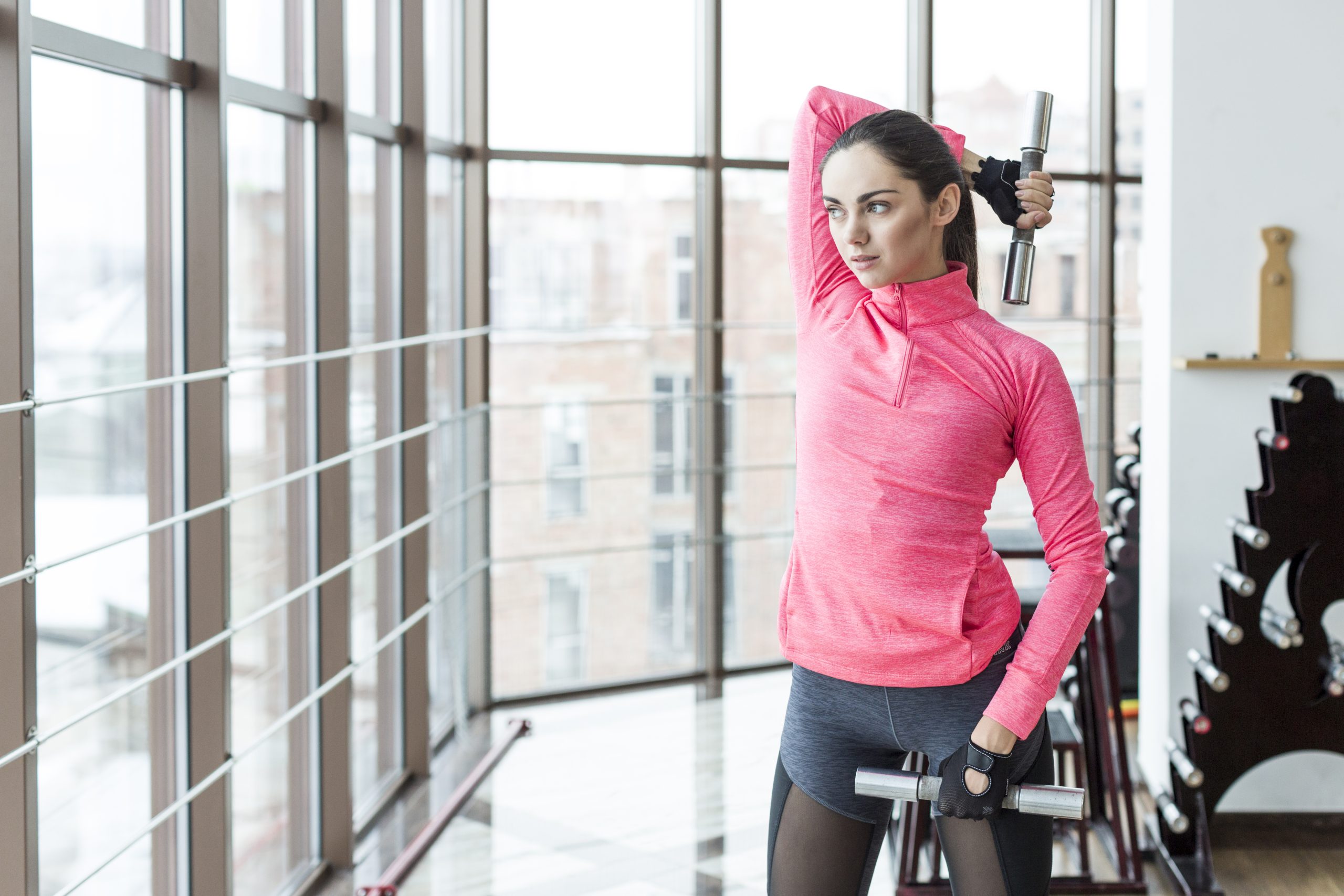
Understanding Hormones and Why Balance Matters
Hormones are chemical messengers that affect nearly every system in the body. From estrogen and progesterone to cortisol, insulin, and testosterone, these key hormones regulate energy levels, mood, metabolism, muscle growth, and even sleep. When one hormone becomes imbalanced, the entire network is affected.
For women, hormonal balance is especially important because it changes throughout life—during the menstrual cycle, pregnancy, and menopause. Each phase brings hormonal shifts that influence everything from workout performance to recovery, bone health, and weight regulation.
Many women notice that when their hormones are off, they experience fatigue, weight gain, poor sleep, or mood changes. These symptoms often result from hormonal imbalance, where estrogen, progesterone, or cortisol levels fluctuate beyond healthy ranges.
That’s where exercise becomes one of the most powerful, natural tools to balance hormones and improve long-term hormonal health.
How Exercise Affects Female Hormones
You may already know that regular physical activity supports heart health and muscle tone—but its impact on female hormones goes far deeper. When you move your body, you activate a complex chain reaction between the brain and endocrine system that helps regulate hormones naturally.
Here’s how different forms of exercise affect hormone levels:
- Estrogen: Moderate aerobic exercise supports healthy estrogen levels by improving metabolism and reducing stored body fat, which can otherwise produce excess estrogen.
- Progesterone: Regular strength training and resistance training can help stabilize progesterone levels, promoting better mood and less bloating during the menstrual cycle.
- Cortisol: Known as the “stress hormone,” cortisol spikes with chronic stress. Exercise helps balance cortisol by reducing anxiety, improving sleep, and releasing endorphins.
- Insulin: Exercise enhances insulin sensitivity, meaning your body uses glucose more efficiently, which prevents energy crashes and reduces fat storage.
- Growth hormone: Resistance and high-intensity exercise stimulate the release of growth hormone, essential for recovery, metabolism, and muscle mass maintenance.
Together, these changes help maintain a healthy hormone balance, reduce PMS symptoms, and support emotional stability.
Why Hormonal Imbalance Happens — and How Exercise Can Help
Hormonal imbalance can be triggered by several factors: poor diet, stress, lack of sleep, or a sedentary lifestyle. Over time, these create fluctuations in cortisol, and insulin which can lead to weight gain, fatigue, and irritability.
Regular exercise training is one of the simplest, most effective ways to counteract these imbalances. It doesn’t just improve physical fitness—it directly influences how your hormones affect your brain and body.
For example:
- Strength training improves bone density and supports estrogen and progesterone levels, especially in postmenopausal women.
- Aerobic exercise lowers cortisol levels and increases endorphins, improving mental well-being.
- Moderate-intensity exercise helps maintain insulin sensitivity and metabolic health.
The key is balance. Too little movement leads to hormonal sluggishness, while intense exercise without recovery can elevate cortisol and disrupt your cycle.
The goal is to adopt a fitness routine that enhances hormonal balance, not depletes it.
Exercise Helps Balance Hormones Naturally
When done correctly, exercise helps balance hormones across all life stages. A consistent mix of cardiovascular exercise, strength training, and recovery days creates synergy in your hormonal health.
Research in the Journal of Women’s Health & Exercise Science (2024) found that women engaging in 150 minutes of moderate exercise weekly saw improved estrogen and progesterone balance and reduced menstrual irregularities.
Forms of exercise that support hormonal balance include:
- Walking or cycling — boosts circulation and lowers stress-related cortisol.
- Yoga and Pilates — reduce stress levels and enhance parasympathetic nervous system activity.
- Weight training — maintains muscle mass, bone density, and healthy testosterone balance.
- HIIT — improves insulin sensitivity when done 1–2 times per week, avoiding cortisol overproduction.
Regular movement also triggers hormones like endorphins, which act as natural mood elevators and pain relievers, reinforcing a positive feedback loop for both body and mind.
Supporting Hormonal Balance Beyond Exercise
While exercise is one of the most powerful tools for regulating hormones, it works best when combined with lifestyle balance.
- Sleep: Deep rest regulates growth hormone and cortisol rhythms.
- Nutrition: Eat balanced meals rich in protein, healthy fats, and fiber to support insulin and estrogen metabolism.
- Stress Management: Chronic stress disrupts hormones like cortisol; mindfulness or light activity can stabilize it.
- Hydration: Proper water intake improves blood flow, metabolism, and hormone transport.
Together, these habits create a sustainable foundation for hormonal balance and overall wellness.
How Exercise Affects Hormonal Balance During Different Life Stages
Women’s hormones are chemical messengers that fluctuate naturally throughout life. However, the effect of exercise on hormonal balance depends on factors such as age, menstrual cycle phase, pregnancy, or menopause. Understanding these shifts helps tailor your training plan for the best hormonal health and physical results.
1. During the Menstrual Cycle
Throughout the menstrual cycle, estrogen and progesterone levels rise and fall, affecting energy levels, metabolism, and recovery.
- Follicular Phase (Day 1–14):
Estrogen levels rise steadily, improving insulin sensitivity and energy. This is the best time for strength training or high-intensity exercise, as your body recovers faster and builds muscle mass efficiently.
Try workouts like squats, HIIT, and cardiovascular exercise for improved metabolism.
Growth hormone and testosterone naturally peak, promoting better muscle tone and performance.
- Luteal Phase (Day 15–28):
Progesterone levels increase, preparing the body for potential pregnancy. You may feel warmer and more fatigued. During this time, switch to moderate exercise or aerobic exercise like yoga, swimming, or walking.
Focus on stress reduction to balance cortisol levels and improve sleep.
Stay hydrated to reduce bloating and fatigue from hormonal shifts.
Exercise helps balance hormones throughout the cycle by keeping estrogen and progesterone fluctuations smoother, which can lessen PMS symptoms like mood swings, cravings, or water retention.
2. During Pregnancy
Exercise during pregnancy (with medical clearance) can help regulate insulin, cortisol, and estrogen levels, keeping both mother and baby healthy.
- Low to moderate exercise such as brisk walking, prenatal yoga, and resistance band workouts can maintain healthy hormone levels.
- Staying active helps support hormonal balance by improving circulation, reducing stress hormones, and enhancing mood through endorphins.
However, it’s essential to listen to your body. Avoid high-intensity exercise that raises heart rate excessively or causes dizziness. Exercise helps maintain bone density, joint mobility, and energy without overtaxing the system.
3. During Menopause and Post-Menopause
In menopause, estrogen and progesterone production declines significantly, impacting metabolism, bone health, and mood regulation. Many women experience weight gain, fatigue, or hot flashes due to changing hormone levels.
Exercise can help balance these changes naturally:
- Resistance training preserves muscle mass and combats the drop in metabolic rate.
- Weight-bearing exercise such as walking or Pilates improves bone density and reduces fracture risk.
- Aerobic exercise supports cardiovascular and hormonal health by lowering cortisol and improving mood.
Postmenopausal women also benefit from improved growth hormone and insulin regulation through consistent training. According to the American College of Sports Medicine (ACSM), just 30 minutes of moderate-intensity exercise five days per week can significantly support hormonal balance and long-term health.
Key Hormones Affected by Exercise
Estrogen
This sex hormone regulates metabolism, fat distribution, and reproductive function. Regular exercise may increase estrogen sensitivity, helping the body maintain healthy hormone levels and reducing risks linked to estrogen dominance or deficiency.
Progesterone
Balancing progesterone levels prevents mood swings and water retention. Exercise training promotes steady release patterns, especially when combined with adequate rest and nutrition.
Cortisol
Known as the “stress hormone,” cortisol is necessary in small doses but harmful when chronically elevated. Too much intense exercise can spike cortisol, while moderate exercise (like walking or swimming) reduces it—helping regulate sleep and appetite.
Insulin
Insulin sensitivity improves dramatically with strength training and aerobic exercise, which prevents energy crashes and supports weight management.
Growth Hormone and Testosterone
Although levels are lower in women, these key hormones play major roles in muscle recovery and fat metabolism. Resistance training and HIIT sessions trigger healthy hormonal releases that rejuvenate the body.
The Link Between Hormonal Imbalance and Lifestyle
Hormonal imbalance doesn’t happen overnight. It often results from chronic stress, poor diet, or a sedentary lifestyle that disrupts hormones like cortisol and insulin.
Signs of hormonal imbalance include:
- Persistent fatigue or brain fog
- Sudden weight gain or difficulty losing fat
- Mood changes or irritability
- Irregular menstrual cycles
- Poor sleep or anxiety
Exercise is one of the most effective ways to correct these imbalances naturally. Even light physical activity increases circulation, reduces stress, and enhances hormones like endorphins—the body’s natural mood boosters.
Supporting Hormonal Health With Recovery and Nutrition
To fully support hormonal health, recovery is just as important as training. Much exercise without rest increases cortisol and leads to burnout.
Tips to maintain a healthy hormone balance:
- Include active recovery (yoga, stretching, brisk walks).
- Sleep 7–8 hours to allow hormones throughout the body to reset.
- Eat protein-rich foods to support estrogen and progesterone levels.
- Hydrate adequately to maintain blood flow and nutrient transport.
Combining these habits with a balanced exercise routine ensures that your hormones play their role in keeping energy high, stress low, and metabolism strong.
Best Exercises to Support Hormonal Balance
Not all workouts affect your hormones the same way. Some forms of exercise raise cortisol levels, while others help stabilize estrogen, progesterone, and insulin. To maintain a healthy hormone balance, the key is diversity and moderation — balancing strength training, aerobic exercise, and recovery.
1. Strength Training for Estrogen and Bone Health
Strength training is one of the most effective forms of exercise for women’s hormones. It stimulates growth hormone, improves testosterone balance, and prevents bone density loss, which is especially important after menopause.
Try combining:
- Squats, lunges, and deadlifts to increase lower-body strength and support estrogen and progesterone levels.
- Free weights or resistance bands for upper-body workouts that boost muscle mass and metabolism.
How it supports hormones:
Resistance work helps regulate insulin, reduces cortisol, and encourages the production of healthy hormone levels that promote fat metabolism and muscle repair.
Pro tip: Begin with 2–3 strength sessions per week. Focus on proper form to avoid injury and overtraining.
2. Aerobic and Cardiovascular Exercise for Cortisol Control
Cardiovascular exercise like running, swimming, or cycling keeps your physical activity levels high while improving insulin sensitivity and heart health.
Moderate aerobic exercise supports the natural rhythm of sex hormones, improving hormonal balance without overtaxing the body.
Benefits include:
- Stabilized cortisol levels through stress reduction
- Improved insulin regulation for sustained energy
- Enhanced estrogen metabolism for weight management
Balance is key:
Excessive cardio or high-intensity exercise every day may increase stress levels and delay recovery. Incorporate rest days and alternate between low-impact sessions and HIIT.
3. Yoga, Pilates, and Mindful Movement for Hormonal Health
These low-intensity forms of exercise help balance hormones by reducing stress and activating the parasympathetic nervous system.
Practices like yoga and Pilates are known to improve hormonal health, especially in women dealing with PMS, PCOS, or menopausal symptoms.
Hormones affected by exercise like yoga:
- Reduces cortisol and boosts endorphins (mood hormones)
- Enhances estrogen balance and promotes better sleep
- Improves insulin sensitivity and metabolism
Try this: 15–20 minutes of mindful stretching or yoga breathing daily can help support your hormones and lower inflammation.
4. High-Intensity Interval Training (HIIT) for Growth Hormone Boost
Short bursts of HIIT (20–30 minutes) promote growth hormone production and fat loss while preserving muscle mass.
For women balancing workouts and hormonal cycles, HIIT is best done 1–2 times weekly during high-energy phases (follicular or mid-cycle).
Why it helps:
- Stimulates hormones like cortisol in controlled doses for adaptation
- Increases metabolic rate and maintains insulin sensitivity
- Triggers hormones like endorphins that boost motivation and well-being
Avoid: Overdoing HIIT without recovery — too much exercise can raise cortisol and cause fatigue.
5. Recovery, Rest, and Sleep — The Forgotten Hormonal Reset
The most underrated part of supporting hormonal balance is rest. During recovery, your body releases growth hormone and restores sex hormone levels.
Without enough rest, even the best exercise regimen becomes counterproductive.
Sleep 7–9 hours per night and include active recovery days (like walking or stretching) to help maintain balance in female hormones.
Building a Balanced Exercise Routine for Hormonal Health
To support hormonal balance long-term, aim for a weekly exercise routine that covers all dimensions of fitness and recovery:
| Day | Type of Exercise / Virago Class | Hormonal Benefit |
|---|---|---|
| Monday | Step or Fit Boxing – with Amira Ben Ali / Wiem Trabelsi | Boosts estrogen and testosterone, improving energy and motivation. |
| Tuesday | Pilates or Brazilian Toning – with Vanessa Santos | Reduces cortisol and promotes hormonal calm for better stress control. |
| Wednesday | BodyCombat or Zumba – with Rana Khan / Madeha Abdul Majed | Elevates endorphins and serotonin, supporting emotional balance. |
| Thursday | Yoga or Circuit Training – with Zainab Zainab / Wiem Trabelsi | Balances progesterone levels and supports overall hormonal recovery. |
| Friday | V-Glutes or Pilates – with Rasha Ismail / Vanessa Santos | Supports growth hormone release and enhances muscle tone. |
| Weekend | Virago Ride or African Dance – with Amira Ben Ali / Rasha Ismail | Improves insulin sensitivity and maintains healthy estrogen levels. |
🔗 See full program here → Virago Fitness Programs
This mix ensures hormones throughout the body work in harmony — balancing stress levels, energy, and metabolism.
Exercise and Hormonal Imbalance: Signs You Need to Adjust
While exercise helps balance hormones, too much of it or the wrong type can backfire.
Watch for these signs of hormonal imbalance related to overtraining or stress:
- Persistent fatigue or muscle soreness
- Irregular menstrual cycle
- Difficulty sleeping
- Increased appetite or weight gain
- Emotional instability or irritability
If these occur, scale back intensity, focus on moderate exercise, and prioritize nutrition and rest.
Remember — hormonal balance isn’t just about movement; it’s about how you recover.
FAQs – Exercise and Hormonal Balance in Women
1. What type of exercise helps balance hormones the most?
A combination of strength training, aerobic exercise, and mindful movement (like yoga or Pilates) is most effective. This mix regulates estrogen, progesterone, insulin, and cortisol for long-term hormonal health.
2. Can exercise fix hormonal imbalance naturally?
Yes, regular exercise can help correct hormonal imbalance by reducing stress, improving insulin sensitivity, and supporting healthy hormone levels. However, severe imbalances like PCOS or thyroid issues may require medical guidance.
3. How often should I work out for hormonal balance?
Aim for at least 150 minutes of moderate-intensity exercise per week — ideally spread across strength training, cardio, and flexibility work. Too much or too little movement can both disrupt hormones like cortisol.
4. Does exercise affect hormones during menopause?
Absolutely. Exercise helps balance hormones during menopause by improving bone density, reducing fat gain, and increasing growth hormone and endorphin release. It’s one of the best natural therapies for mood and metabolism.
5. Can overtraining cause hormonal imbalance?
Yes. High-intensity exercise without proper recovery raises cortisol and lowers estrogen, leading to fatigue, poor sleep, and irregular cycles. Always include rest days in your exercise regimen.
6. How can I support hormonal health besides exercise?
Pair your workouts with:
- A nutrient-dense diet rich in protein, fiber, and omega-3s
- 7–8 hours of sleep for natural hormone production
- Stress-management habits like meditation or walking outdoors
Thoughts: Balance Is Key
Your hormones are the invisible regulators of how you feel, move, and perform. The right forms of exercise can transform not only your physical fitness but also your hormonal health.
The secret? Balance — between intensity and recovery, between cardiovascular exercise and strength training, and between discipline and rest.
So, whether you’re managing PMS, navigating menopause, or simply seeking more energy, remember:
Exercise can help balance hormones — naturally, effectively, and for life.




